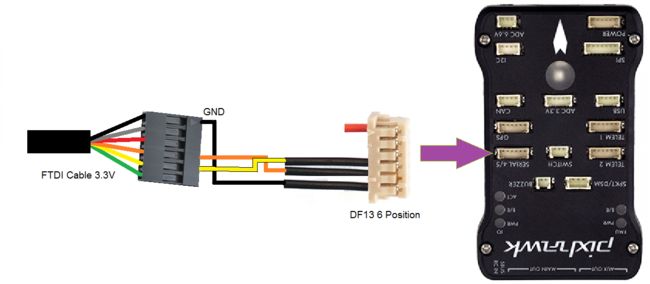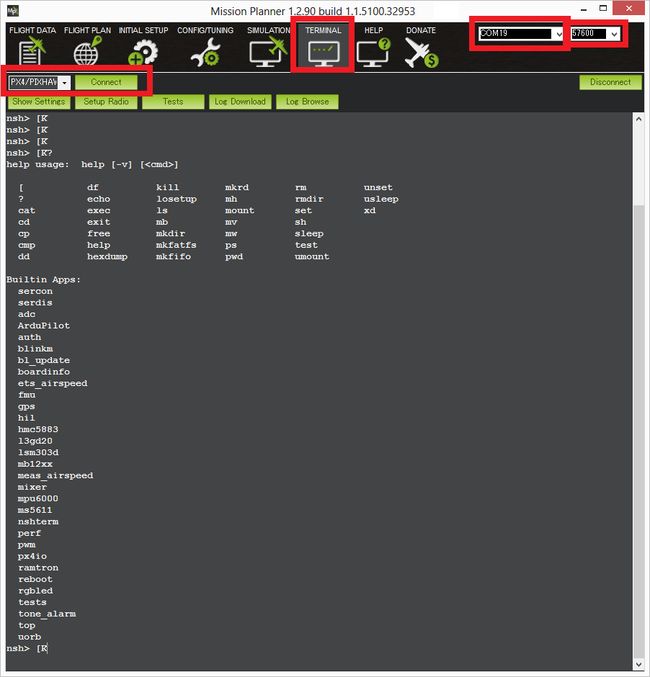定义:bool是一种数据类型取值为false或者true定义:boolisFind=true;内存大小占一个字节使用bool的一些使用举例#includeusingnamespacestd;boolfun(inta,intb){returna+b>=10;}intmain(){boola=true;cout<
Keil MDK 嵌入式项目开发的一些问题:expected a “{“、declaration is incompatible with previous
我命由我12345
嵌入式-问题清单嵌入式硬件嵌入式嵌入式软件cc语言c++stm32
在使用KeilMDK开发项目,编译时,报如下错误***UsingCompiler'V5.06update1(build61)',folder:'D:\Keil_v5\ARM\ARMCC\Bin'Buildtarget'iwdg'assemblingstartup_stm32f10x_hd.s...compilingmain.c...user\main.c(3):error:#130:expecte
Python中Django处理MySQL事务@transaction.atomic(using=‘default‘, savepoint=True)
蓝小白1024
Django值得拥有-Python数据库pythondjangomysql
Python中Django处理MySQL事务@transaction.atomic(using=‘default’,savepoint=True)fromdjango.dbimporttransaction#导入事务模块在Django中开启MySQL事务有两种方式,一种是使用装饰器,还有一种是使用with(相当于上下文管理器)来开启事务装饰器方式在函数视图中#在函数视图添加一个@transacti
c# 利用 GZipStream 压缩解压缩文件(所有类型的文档)
山海上的风
c#
c#利用GZipStream压缩解压缩文件(所有类型的文档)usingSystem;usingSystem.Collections.Generic;usingSystem.IO;usingSystem.IO.Compression;usingSystem.Linq;usingSystem.Text;usingSystem.Threading.Tasks;namespaceGZipStream_压缩
PAT A1052Linked List Sorting(测试点3:输出首节点地址时也要保证格式)
明亮的托比
PATPAT真题静态链表
#include#include#includeusingnamespacestd;#defineMAX100010structnode{intadd;intkey;intnext;intflag;};boolcmp(nodea,nodeb){returna.key>n>>first;inti,x;node*s=newnode[MAX];
C++学习笔记.2
Lowjin_
C++c++学习笔记
类和对象封装语法:class关键字{访问权限属性行为}#includeusingnamespacestd;constdoublepi=3.14;//设计一个圆类classcircle{//访问权限//公共权限public://属性intr;//行为doublec(){return2*pi*r;}};intmain(){//通过圆类创建具体的圆(对象)circlec1;c1.r=10;cout#in
2017暑训摸底(xdoj1045,xdoj1173,xdoj1007,xdoj1038)
Owen_Q
dpxdoj搜索
由于时间没赶上摸底,只能跟一波新增的dp摸底,感觉难度一般般,可能有段时间内没做题的缘故吧暑训就要开始了呢A黑白棋思路:一上来就是个博弈搜索根据上一状态与这一状态必胜必败态的转换来判断先手的情况dfs搜索所有前项状态,若均为必败态,则该状态为必胜态,否则为必败态/*Author:Owen_Q*/#includeusingnamespacestd;inta[5][5];intdfs(intx,int
2015 United Kingdom and Ireland Programming Contest (UKIEPC 2015)
Owen_Q
数学字符串模拟
2015年的icpc英国站,不到一百只过题队伍,可以算是icpc在英国刚起步的时候。ProblemBMountainBiking思路:作为本场的签到题,读懂题意之后,这题倒是更像一道数学题。给定n个坡面的角度,求解到达坡道底端的速度利用经典力学动力学公式即可直接求出./*AuthorOwen_Q*/#includeusingnamespacestd;typedeflonglongll;consti
【C++】C++快速回顾入门、概念概要
子非渔
C++入门C++C++总结
C++语言跟其它语言类似,主要基本的本文不列举了。我在学习的过程中,遇到C++的不同之处,或者是重点的地方,都会将其记录下来。主要从关键字、常见函数、输入输出等角度去记录。输入输出:count>命名空间:namespaceusingnamespacestd;extern:多个文件中共享的全局变量。主要是将本文件中的变量释放至其他文件也可以使用的全局高度。用于不同文件的数据交互。成员运算符:.->.
C51 中断+主程序读写全局变量遇到的问题及解决摘录
上帝木偶
在开发C51单片机时,如果你使用中断+主程序一起读写全局变量时,有机会遇到各种奇怪的现象,怎么调都发现数值是不对的,这时候你应该检查一下以下几点:1、中断函数是否采用了usingX?如无必要,尽量不要使用using寄存器组,我被这个问题弄了2天。2、全局变量如果定义时采用了DATA、XDATA之类的修饰,那么在使用指针引用全局变量时,也要加上这些修饰符。
一些unity知识点
乌趣
unityc#游戏引擎
变量类型Animatora:定义animator组件类型变量LayerMaska:定义存储图层的变量Texta:定义文本变量,如UI的TextLineRenderer:定义保存LineRenderer组件的变量(画线用的)Material:定义保存材质的变量使用UI和场景管理的方法时记得usingUnityEngine.UI;usingUnityEngine.SceneManagement;pub
Excel数据导出小记
焚 城
记录总结EXCEL插件excel.net
文章目录前言一、DataTable=>EXCEL二、DBReader=>Excel(NPOI)三、分页查询DbReader=>Excel(MiniExcel)总结:前言最近经历了一次数据量比较大的导出,也做了各种优化尝试,这里稍记录一下一、DataTable=>EXCELusingSystem;usingSystem.Collections.Generic;usingSystem.IO;using
C++039(指针的自增 自减运算)
有点。
C++c++
1.指针的自增自减运算指针变量存储的是地址,因此对指针做运算就等于对地址做运算。下面通过实例介绍指针的自增、自减运算。1.2输出整型变量变化地址定义指针变量和整型变量,并将整型变量的地址赋给指针变量,再进行指针自增、自减运算,输出结果,比较增减前后的数值。代码如下:#includeusingnamespacestd;intmain(){inta=100;int*p=&a;//定义整型指针并赋初值p
go vs C#/c/c++
fyifei0558
java开发语言
1.main函数定义Go:funcmain(),不能带参数,也不能有返回值。C/C++:intmain(intargc,char*argv[]),参数可以直接获取命令行参数。C#:staticvoidMain(string[]args),参数直接是命令行参数数组。2.包和导入(import/using/include)Go:用package声明包名,import导入包。没有头文件,所有导出符号靠首
【华为od刷题(C++)】HJ11 数字颠倒
m0_64866459
算法c++开发语言
我的代码:#include#include#include//引入算法库,提供常见的算法,比如排序、查找、反转等,这里使用了reverse函数来反转字符串usingnamespacestd;intmain(){strings;getline(cin,s);reverse(s.begin(),s.end());/*reverse函数反转字符串的字符顺序s.begin()和s.end()分别表示字符串
修改Docker Root Dir
.Eyes
dockerdocker
DockerRootDir修改环境:-dockerversion1.13-OS:centos7.6-虚拟机:已完成文件系统新建dockerinfo查看默认位置#dockerinfo|grepRootWARNING:You'renotusingthedefaultseccompprofileDockerRootDir:/var/lib/docker编辑/etc/docker/daemon.json添
Vuex-I18n 开源项目使用教程
虞耀炜
Vuex-I18n开源项目使用教程vuex-i18nLocalizationpluginforvue.js2.0usingvuexasstore项目地址:https://gitcode.com/gh_mirrors/vu/vuex-i18n1.项目的目录结构及介绍Vuex-I18n是一个为Vue.js应用程序设计的国际化插件,它集成到Vuex中,使得状态管理与多语言支持紧密结合。以下是其基本的目录
简单的回调函数理解
望外追晚
c++开发语言
使用两个脚本简单理解回调函数。简单来说,将函数B当做另一个函数A的参数进行调用。Demo1使用当前通用的std::function#include//包含std::function和std::bindusingnamespacestd;//普通函数voidmyCallbackFunction(intvalue,stringname){coutcallback,intdata,stringname)
C++补充知识+专题思维导图
Cyrus_柯
C++c++算法开发语言面向对象
补充知识:1.nullptrNULL在源码中就是一个0,因此可能会出现一些二义性的问题。#includeusingnamespacestd;voidfunc(inta){coutusingnamespacestd;voidfunc(inta){coutusingnamespacestd;intmain(){autoa=10;//a的类型被推导为整型(int)coutusingnamespacest
PNAS顶刊:使用 GPT-4 揭示概念的语义
GaëlLeMens、BalázsKovács、MichaelT.HannanandGuillemPros合作的题为“UncoveringthesemanticsofconceptsusingGPT-4”的文章,发表于ProceedingsoftheNationalAcademyofSciences。摘要最近的大型语言模型(LLM),如GPT-3.5和GPT-4生成类似人类的文本的能力表明,社会科
Fast Image Deconvolution using Hyper-Laplacian Priors论文阅读
青铜锁00
#退化论文阅读论文阅读图像处理
FastImageDeconvolutionusingHyper-LaplacianPriors1.论文的研究目标与实际意义2.论文的创新方法2.1核心框架:交替最小化(AlternatingMinimization)2.2x子问题:频域FFT加速2.3w子问题:高效求解的核心创新2.3.1问题形式2.3.2查找表法(LUT)2.3.3解析解法(特定α\alphaα)2.3.4通用α\alphaα
蓝桥杯备考---》模拟算法之扫雷游戏
无敌大饺子 dot
算法蓝桥杯游戏
#includeconstintN=120;usingnamespacestd;intn,m;chara[N][N];intdx[]={-1,-1,0,1,1,1,0,-1};intdy[]={0,1,1,1,0,-1,-1,-1};intmain(){cin>>n>>m;for(inti=1;i>a[i][j];}}for(inti=1;in||y>m){continue;}if(a[x][y]
java工厂模式
3213213333332132
java抽象工厂
工厂模式有
1、工厂方法
2、抽象工厂方法。
下面我的实现是抽象工厂方法,
给所有具体的产品类定一个通用的接口。
package 工厂模式;
/**
* 航天飞行接口
*
* @Description
* @author FuJianyong
* 2015-7-14下午02:42:05
*/
public interface SpaceF
nginx频率限制+python测试
ronin47
nginx 频率 python
部分内容参考:http://www.abc3210.com/2013/web_04/82.shtml
首先说一下遇到这个问题是因为网站被攻击,阿里云报警,想到要限制一下访问频率,而不是限制ip(限制ip的方案稍后给出)。nginx连接资源被吃空返回状态码是502,添加本方案限制后返回599,与正常状态码区别开。步骤如下:
java线程和线程池的使用
dyy_gusi
ThreadPoolthreadRunnabletimer
java线程和线程池
一、创建多线程的方式
java多线程很常见,如何使用多线程,如何创建线程,java中有两种方式,第一种是让自己的类实现Runnable接口,第二种是让自己的类继承Thread类。其实Thread类自己也是实现了Runnable接口。具体使用实例如下:
1、通过实现Runnable接口方式 1 2
Linux
171815164
linux
ubuntu kernel
http://kernel.ubuntu.com/~kernel-ppa/mainline/v4.1.2-unstable/
安卓sdk代理
mirrors.neusoft.edu.cn 80
输入法和jdk
sudo apt-get install fcitx
su
Tomcat JDBC Connection Pool
g21121
Connection
Tomcat7 抛弃了以往的DBCP 采用了新的Tomcat Jdbc Pool 作为数据库连接组件,事实上DBCP已经被Hibernate 所抛弃,因为他存在很多问题,诸如:更新缓慢,bug较多,编译问题,代码复杂等等。
Tomcat Jdbc P
敲代码的一点想法
永夜-极光
java随笔感想
入门学习java编程已经半年了,一路敲代码下来,现在也才1w+行代码量,也就菜鸟水准吧,但是在整个学习过程中,我一直在想,为什么很多培训老师,网上的文章都是要我们背一些代码?比如学习Arraylist的时候,教师就让我们先参考源代码写一遍,然
jvm指令集
程序员是怎么炼成的
jvm 指令集
转自:http://blog.csdn.net/hudashi/article/details/7062675#comments
将值推送至栈顶时 const ldc push load指令
const系列
该系列命令主要负责把简单的数值类型送到栈顶。(从常量池或者局部变量push到栈顶时均使用)
0x02 &nbs
Oracle字符集的查看查询和Oracle字符集的设置修改
aijuans
oracle
本文主要讨论以下几个部分:如何查看查询oracle字符集、 修改设置字符集以及常见的oracle utf8字符集和oracle exp 字符集问题。
一、什么是Oracle字符集
Oracle字符集是一个字节数据的解释的符号集合,有大小之分,有相互的包容关系。ORACLE 支持国家语言的体系结构允许你使用本地化语言来存储,处理,检索数据。它使数据库工具,错误消息,排序次序,日期,时间,货
png在Ie6下透明度处理方法
antonyup_2006
css浏览器FirebugIE
由于之前到深圳现场支撑上线,当时为了解决个控件下载,我机器上的IE8老报个错,不得以把ie8卸载掉,换个Ie6,问题解决了,今天出差回来,用ie6登入另一个正在开发的系统,遇到了Png图片的问题,当然升级到ie8(ie8自带的开发人员工具调试前端页面JS之类的还是比较方便的,和FireBug一样,呵呵),这个问题就解决了,但稍微做了下这个问题的处理。
我们知道PNG是图像文件存储格式,查询资
表查询常用命令高级查询方法(二)
百合不是茶
oracle分页查询分组查询联合查询
----------------------------------------------------分组查询 group by having --平均工资和最高工资 select avg(sal)平均工资,max(sal) from emp ; --每个部门的平均工资和最高工资
uploadify3.1版本参数使用详解
bijian1013
JavaScriptuploadify3.1
使用:
绑定的界面元素<input id='gallery'type='file'/>$("#gallery").uploadify({设置参数,参数如下});
设置的属性:
id: jQuery(this).attr('id'),//绑定的input的ID
langFile: 'http://ww
精通Oracle10编程SQL(17)使用ORACLE系统包
bijian1013
oracle数据库plsql
/*
*使用ORACLE系统包
*/
--1.DBMS_OUTPUT
--ENABLE:用于激活过程PUT,PUT_LINE,NEW_LINE,GET_LINE和GET_LINES的调用
--语法:DBMS_OUTPUT.enable(buffer_size in integer default 20000);
--DISABLE:用于禁止对过程PUT,PUT_LINE,NEW
【JVM一】JVM垃圾回收日志
bit1129
垃圾回收
将JVM垃圾回收的日志记录下来,对于分析垃圾回收的运行状态,进而调整内存分配(年轻代,老年代,永久代的内存分配)等是很有意义的。JVM与垃圾回收日志相关的参数包括:
-XX:+PrintGC
-XX:+PrintGCDetails
-XX:+PrintGCTimeStamps
-XX:+PrintGCDateStamps
-Xloggc
-XX:+PrintGC
通
Toast使用
白糖_
toast
Android中的Toast是一种简易的消息提示框,toast提示框不能被用户点击,toast会根据用户设置的显示时间后自动消失。
创建Toast
两个方法创建Toast
makeText(Context context, int resId, int duration)
参数:context是toast显示在
angular.identity
boyitech
AngularJSAngularJS API
angular.identiy 描述: 返回它第一参数的函数. 此函数多用于函数是编程. 使用方法: angular.identity(value); 参数详解: Param Type Details value
*
to be returned. 返回值: 传入的value 实例代码:
<!DOCTYPE HTML>
java-两整数相除,求循环节
bylijinnan
java
import java.util.ArrayList;
import java.util.List;
public class CircleDigitsInDivision {
/**
* 题目:求循环节,若整除则返回NULL,否则返回char*指向循环节。先写思路。函数原型:char*get_circle_digits(unsigned k,unsigned j)
Java 日期 周 年
Chen.H
javaC++cC#
/**
* java日期操作(月末、周末等的日期操作)
*
* @author
*
*/
public class DateUtil {
/** */
/**
* 取得某天相加(减)後的那一天
*
* @param date
* @param num
*
[高考与专业]欢迎广大高中毕业生加入自动控制与计算机应用专业
comsci
计算机
不知道现在的高校还设置这个宽口径专业没有,自动控制与计算机应用专业,我就是这个专业毕业的,这个专业的课程非常多,既要学习自动控制方面的课程,也要学习计算机专业的课程,对数学也要求比较高.....如果有这个专业,欢迎大家报考...毕业出来之后,就业的途径非常广.....
以后
分层查询(Hierarchical Queries)
daizj
oracle递归查询层次查询
Hierarchical Queries
If a table contains hierarchical data, then you can select rows in a hierarchical order using the hierarchical query clause:
hierarchical_query_clause::=
start with condi
数据迁移
daysinsun
数据迁移
最近公司在重构一个医疗系统,原来的系统是两个.Net系统,现需要重构到java中。数据库分别为SQL Server和Mysql,现需要将数据库统一为Hana数据库,发现了几个问题,但最后通过努力都解决了。
1、原本通过Hana的数据迁移工具把数据是可以迁移过去的,在MySQl里面的字段为TEXT类型的到Hana里面就存储不了了,最后不得不更改为clob。
2、在数据插入的时候有些字段特别长
C语言学习二进制的表示示例
dcj3sjt126com
cbasic
进制的表示示例
# include <stdio.h>
int main(void)
{
int i = 0x32C;
printf("i = %d\n", i);
/*
printf的用法
%d表示以十进制输出
%x或%X表示以十六进制的输出
%o表示以八进制输出
*/
return 0;
}
NsTimer 和 UITableViewCell 之间的控制
dcj3sjt126com
ios
情况是这样的:
一个UITableView, 每个Cell的内容是我自定义的 viewA viewA上面有很多的动画, 我需要添加NSTimer来做动画, 由于TableView的复用机制, 我添加的动画会不断开启, 没有停止, 动画会执行越来越多.
解决办法:
在配置cell的时候开始动画, 然后在cell结束显示的时候停止动画
查找cell结束显示的代理
MySql中case when then 的使用
fanxiaolong
casewhenthenend
select "主键", "项目编号", "项目名称","项目创建时间", "项目状态","部门名称","创建人"
union
(select
pp.id as "主键",
pp.project_number as &
Ehcache(01)——简介、基本操作
234390216
cacheehcache简介CacheManagercrud
Ehcache简介
目录
1 CacheManager
1.1 构造方法构建
1.2 静态方法构建
2 Cache
2.1&
最容易懂的javascript闭包学习入门
jackyrong
JavaScript
http://www.ruanyifeng.com/blog/2009/08/learning_javascript_closures.html
闭包(closure)是Javascript语言的一个难点,也是它的特色,很多高级应用都要依靠闭包实现。
下面就是我的学习笔记,对于Javascript初学者应该是很有用的。
一、变量的作用域
要理解闭包,首先必须理解Javascript特殊
提升网站转化率的四步优化方案
php教程分享
数据结构PHP数据挖掘Google活动
网站开发完成后,我们在进行网站优化最关键的问题就是如何提高整体的转化率,这也是营销策略里最最重要的方面之一,并且也是网站综合运营实例的结果。文中分享了四大优化策略:调查、研究、优化、评估,这四大策略可以很好地帮助用户设计出高效的优化方案。
PHP开发的网站优化一个网站最关键和棘手的是,如何提高整体的转化率,这是任何营销策略里最重要的方面之一,而提升网站转化率是网站综合运营实力的结果。今天,我就分
web开发里什么是HTML5的WebSocket?
naruto1990
Webhtml5浏览器socket
当前火起来的HTML5语言里面,很多学者们都还没有完全了解这语言的效果情况,我最喜欢的Web开发技术就是正迅速变得流行的 WebSocket API。WebSocket 提供了一个受欢迎的技术,以替代我们过去几年一直在用的Ajax技术。这个新的API提供了一个方法,从客户端使用简单的语法有效地推动消息到服务器。让我们看一看6个HTML5教程介绍里 的 WebSocket API:它可用于客户端、服
Socket初步编程——简单实现群聊
Everyday都不同
socket网络编程初步认识
初次接触到socket网络编程,也参考了网络上众前辈的文章。尝试自己也写了一下,记录下过程吧:
服务端:(接收客户端消息并把它们打印出来)
public class SocketServer {
private List<Socket> socketList = new ArrayList<Socket>();
public s
面试:Hashtable与HashMap的区别(结合线程)
toknowme
昨天去了某钱公司面试,面试过程中被问道
Hashtable与HashMap的区别?当时就是回答了一点,Hashtable是线程安全的,HashMap是线程不安全的,说白了,就是Hashtable是的同步的,HashMap不是同步的,需要额外的处理一下。
今天就动手写了一个例子,直接看代码吧
package com.learn.lesson001;
import java
MVC设计模式的总结
xp9802
设计模式mvc框架IOC
随着Web应用的商业逻辑包含逐渐复杂的公式分析计算、决策支持等,使客户机越
来越不堪重负,因此将系统的商业分离出来。单独形成一部分,这样三层结构产生了。
其中‘层’是逻辑上的划分。
三层体系结构是将整个系统划分为如图2.1所示的结构[3]
(1)表现层(Presentation layer):包含表示代码、用户交互GUI、数据验证。
该层用于向客户端用户提供GUI交互,它允许用户


